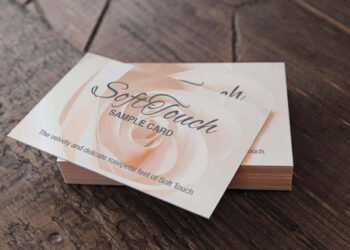You know that music can bring back memories, but did you know it can also help seniors in assisted living facilities?
Music has been proven to be beneficial for senior citizens, and incorporating it into an assisted living facility is an excellent way to improve quality of life.
By providing residents with access to music, staff can help tap into their memories and provide them with joy.
In this article, we’ll explore the connection between music and memory in assisted living, how different types of music are used in these environments, and strategies for incorporating music into your facility.
The Benefits of Music in Assisted Living Facilities
Engaging in music can bring joy and comfort to those who reside in assisted living facilities, making life more enjoyable. Music has the power to evoke strong emotions and create an emotional connection that transcends words. It helps residents recall happy memories from their past and provides them with a sense of security.
Music also encourages social interaction, providing an opportunity for residents to engage with one another. This is especially beneficial for those who struggle with loneliness or isolation within the facility. Through music, residents are able to find solace in each other’s company while connecting on a deeper level than they could have otherwise achieved through conversation alone.
In addition, music has been found to reduce stress and anxiety levels among elderly populations by providing a distraction from physical or emotional pain. By engaging in musical activities such as singing or playing instruments together, residents are reminded of their younger days when they felt healthier and had greater control over their lives. This allows them to regain some of the freedom they may have lost due to aging, which can be incredibly empowering in assisted living communities where independence is often limited.
As such, introducing music into these settings can help promote positive mental health and provide meaningful opportunities for growth and connection among its members. To conclude, music has countless benefits for both individuals and groups residing in assisted living facilities – creating moments of genuine happiness even amidst challenging times.
How Music Can Help Residents
With its power to evoke emotions and take us back in time, it’s no wonder why music can be such a beneficial tool for those living in assisted care.
Music provides an excellent opportunity for residents to socialize with one another through sing-a-longs, musical activities, and instruments like tambourines or maracas. It also helps boost mental stimulation by providing a distraction from the monotony of daily life within an assisted living facility.
Studies have shown that playing music can help reduce stress levels while increasing happiness and overall wellbeing. Music has been found to help improve memory recall as well, which is especially important for elderly individuals who are suffering from cognitive decline due to age or illness.
Listening to familiar songs can trigger memories from years past, giving residents a chance to reminisce about their past experiences and share stories with other residents and staff members alike.
How Music Can Help Staff
You can foster a sense of joy and togetherness with your residents through the power of music! Music therapy has been found to be an effective tool for staff training, as it can help improve communication between staff and residents.
Through music, you can:
* Create positive experiences
* Enhance physical health
* Increase socialization opportunities
* Develop meaningful relationships
* Improve emotional well-being
* Promote spiritual growth
Music is not only a source of comfort for those in assisted living facilities, but it also strengthens relationships between caregivers and their patients.
Through its healing properties, music can provide an outlet to share stories and memories while creating a sense of connection among those involved. With this in mind, transitioning from this section about how music can help staff into the next section about different types of music used in assisted living facilities will be seamless.
Different Types of Music Used in Assisted Living Facilities
By leveraging the powerful therapeutic effects of sound, assisted living facilities can provide residents with a sense of joy, comfort, and togetherness.
Music therapy and leisure listening are both common types of music used in these settings to improve moods, enhance communication, and reduce stress.
Classical music is often used in assisted living communities for its calming effects on residents. Soft rock or jazz may also be played to stimulate memories connected to familiar songs from the past.
Nurses often use lullabies as part of therapeutic interventions when caring for agitated or distressed individuals. In addition, some facilities feature live musical performances such as choirs or solo singers that allow residents to join in singing along and dancing.
Music encourages participation from those with dementia by helping them focus on one task at a time while providing an opportunity for social interaction with others who share similar interests.
Strategies for Incorporating Music into Assisted Living Facilities
Putting on some tunes can make all the difference in an assisted living facility, don’t ya know! Music has been used as a form of therapy for ages and is now becoming increasingly popular in assisted living facilities.
There are many strategies that can be employed to incorporate music into these environments:
* Incorporating music therapy into activities;
* Utilizing musical instruments to engage residents;
* Introducing new forms of popular music to stimulate conversation.
Music can help create a calming environment and provide stimulation for those with Alzheimer’s or dementia. It also provides a sense of community, which is incredibly important in an assisted living facility.
This helps build relationships between staff and residents which can have positive impacts on quality of life.
Impact of Music on Quality of Life in Assisted Living Facilities
Nothing quite brings a smile to someone’s face like some good tunes – and in assisted living facilities, the impact of music on quality of life can be immense!
In order to maximize this potential, it’s important for stakeholders such as family members, care staff, and residents to communicate around what type of music is heard in the facility.
Music has been proven to have a strong effect on sensory stimulation, improving moods and creating positive energy. It can increase social interaction between residents, while also providing them with an enjoyable distraction from any physical and mental pain they may be experiencing.
This results in improved sleep patterns and overall wellbeing for those living in assisted living facilities. By finding ways to incorporate music into their daily lives through listening sessions or even classes that involve playing instruments, elderly people are able to maintain healthy levels of cognitive functioning and emotional stability.
Music can also help establish meaningful connections between generations by bringing together families through shared experiences.
Ultimately, when it comes to assisted living facilities, there are many advantages that come with using music as part of the overall care package. It’s an effective approach that increases quality of life for everyone involved!
Conclusion
You’ve seen the connection between music and memory in assisted living, and you know that it can have a huge impact on the quality of life for residents. But don’t forget the impact it has on staff, too.
Music can make their days more meaningful and enjoyable as they work to care for those who need their help. It’s ironic how something so simple can create such a big difference.
Music is powerful—it carries memories, creates joy, brings people together, and helps us connect with our loved ones in ways we never thought possible. In assisted living facilities, music can be just as transformative—bringing comfort to residents and staff alike, no matter what age or stage of life they’re in.
Also Read Interesting Articles At: Ebeak.

















